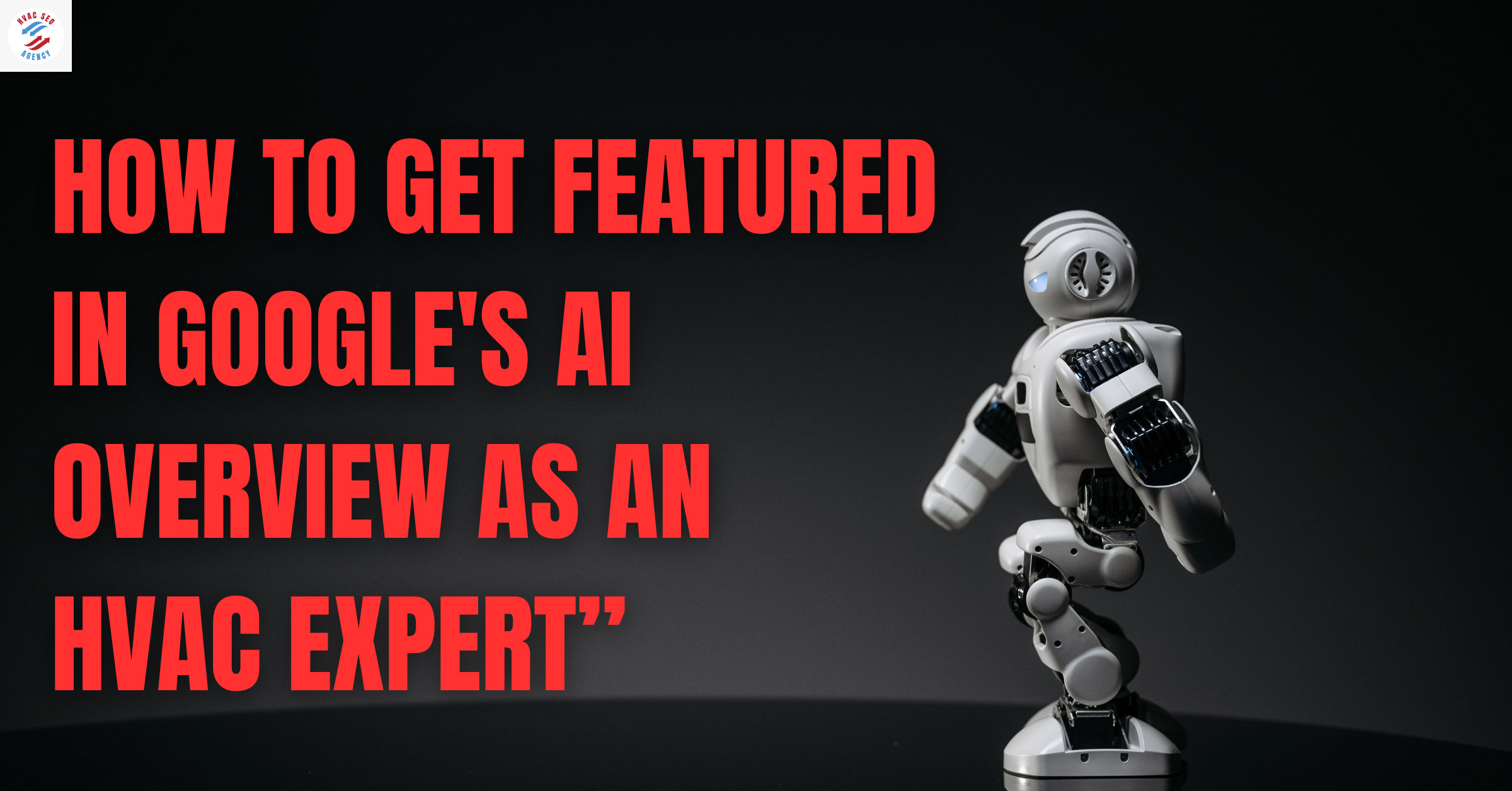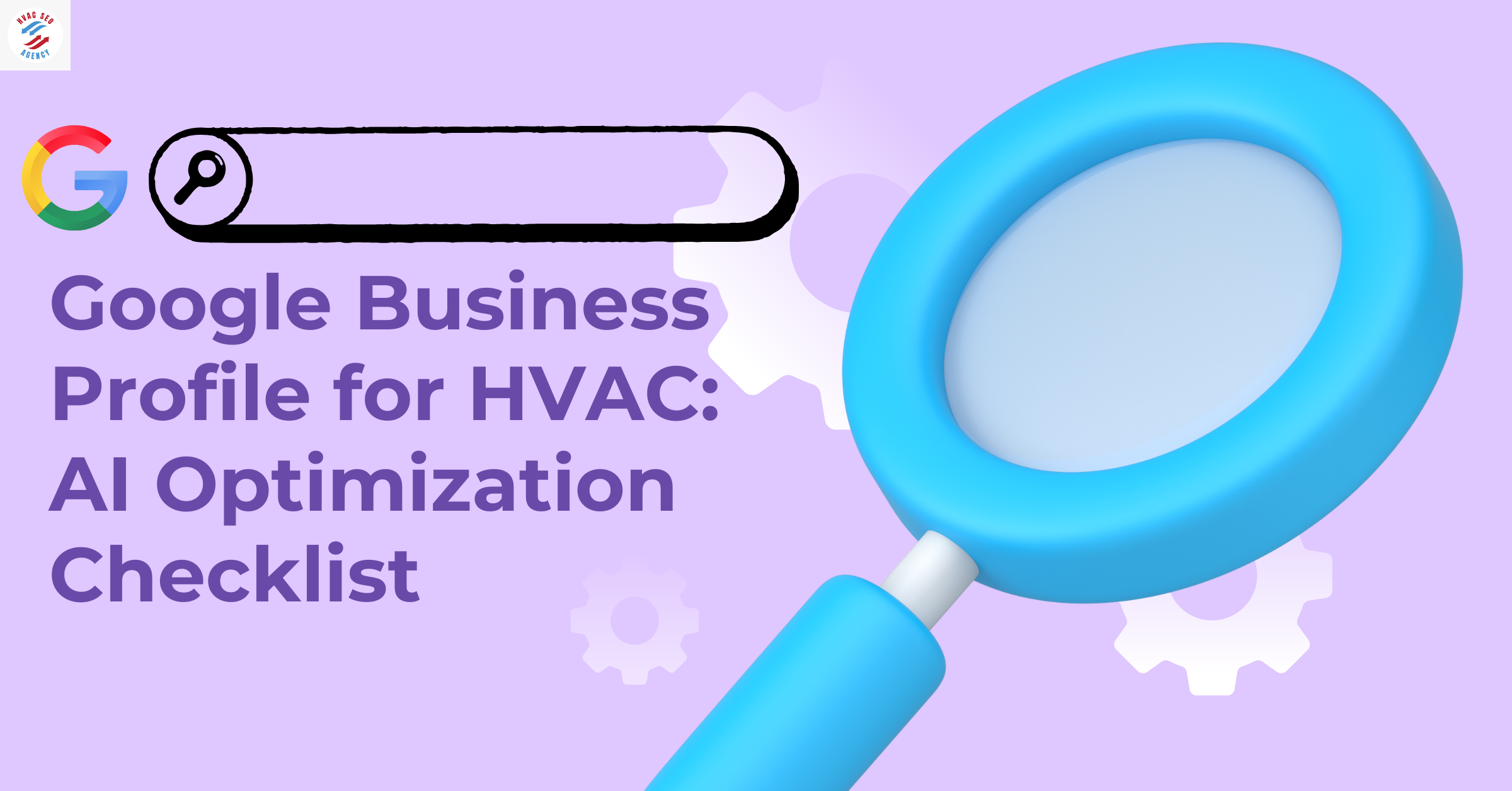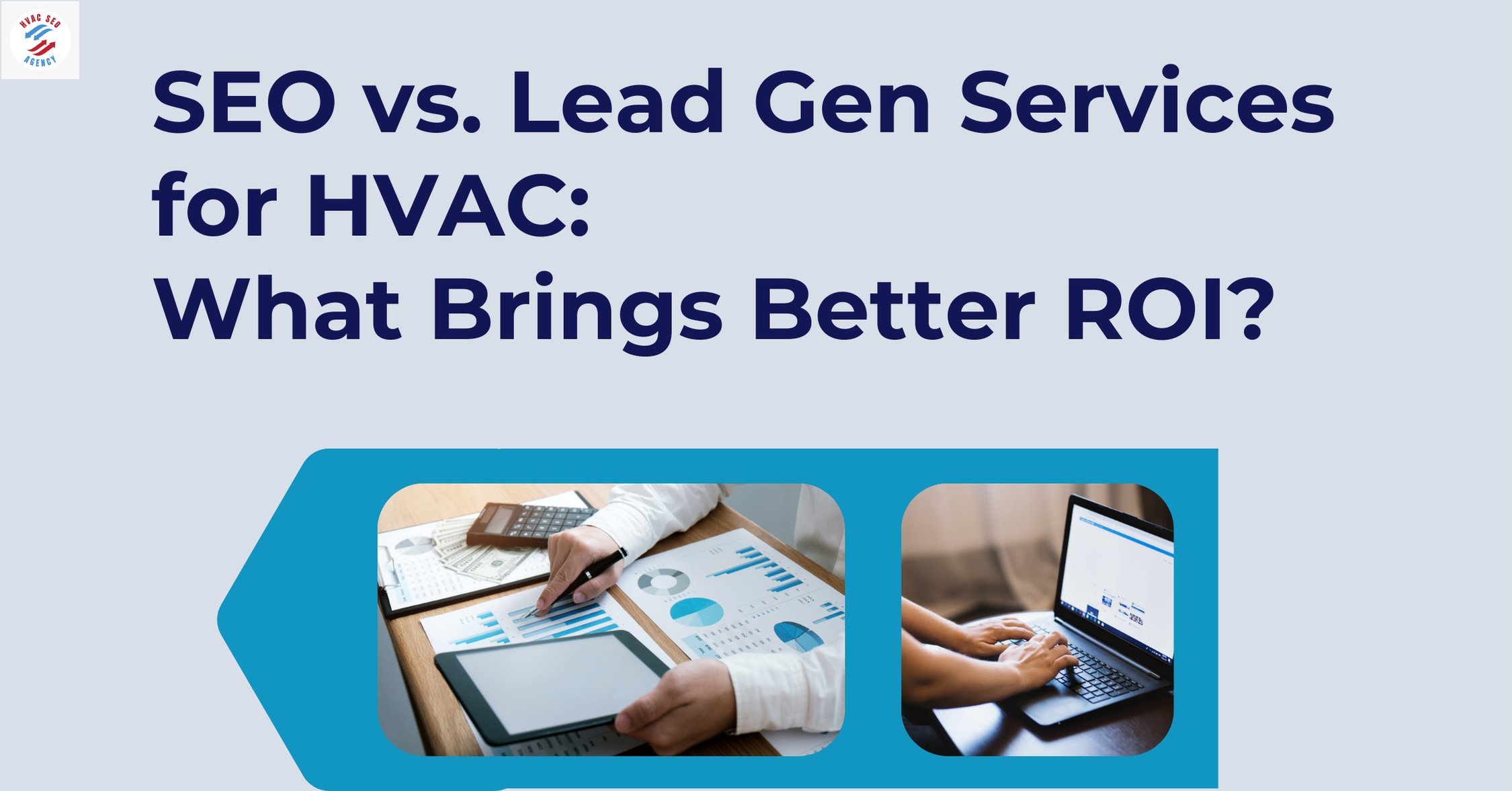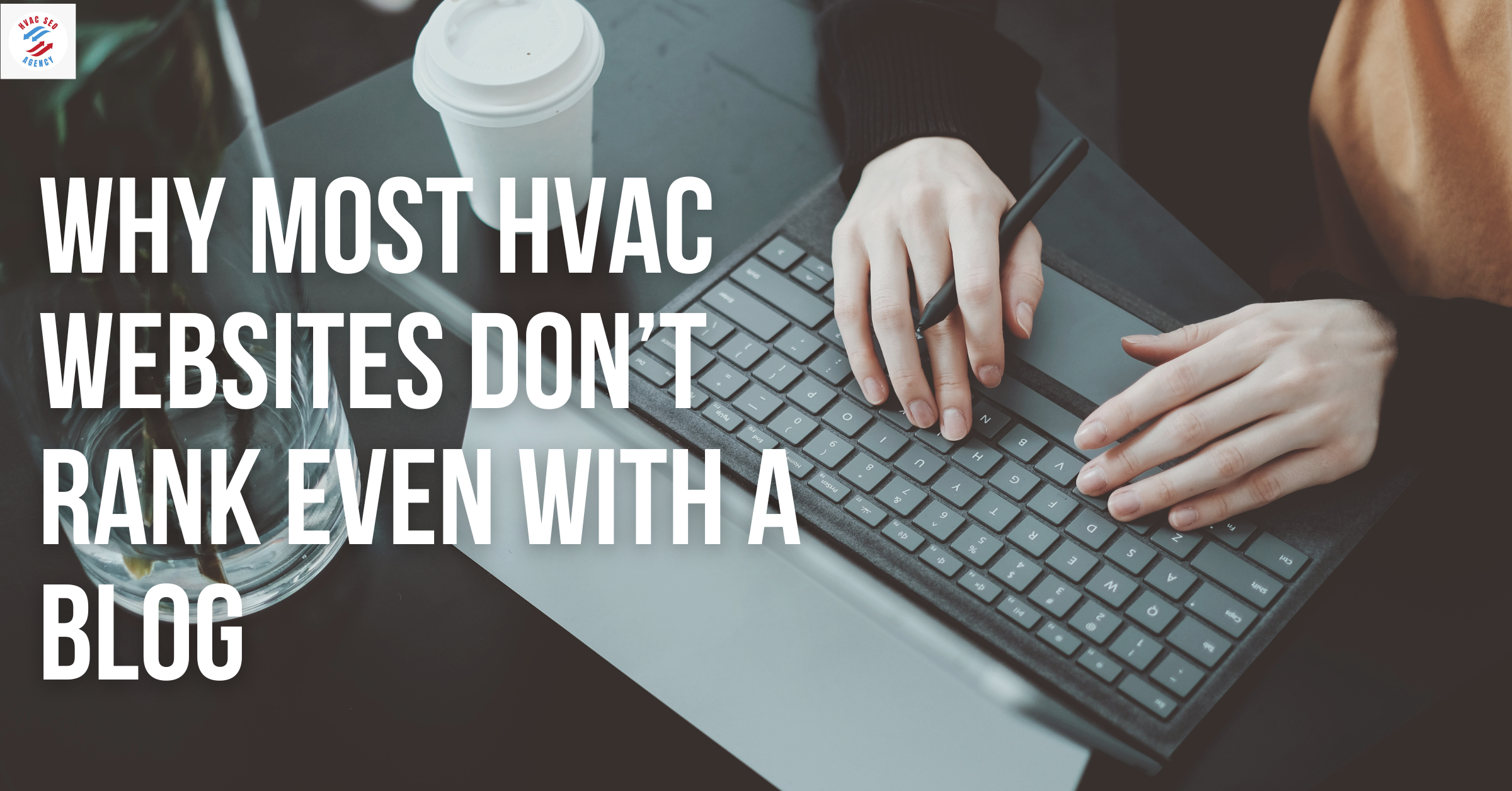Should Your HVAC Business Buy Leads or Focus on Organic Growth?

Section 1:Navigating the HVAC Lead Generation Landscape
In the competitive HVAC industry, generating consistent, high-quality leads is crucial for business growth. Companies often face the dilemma of choosing between purchasing leads and investing in organic growth strategies. Understanding the nuances of both approaches is essential to make informed decisions that align with long-term business objectives.
The Importance of Strategic Lead Generation
Effective lead generation strategies can significantly impact an HVAC company's bottom line. While purchasing leads offers immediate results, it may not provide sustainable growth. Conversely, organic growth strategies, such as search engine optimization (SEO), build a strong online presence over time, leading to consistent lead flow.
The Role of HVAC SEO Agencies
Partnering with specialized HVAC SEO agencies can be a game-changer for businesses aiming for organic growth. These agencies offer tailored strategies that enhance online visibility, improve search engine rankings, and attract qualified leads. For instance, RS Gonzales, a leading Top HVAC marketing Experts in Orlando, provides comprehensive digital marketing services designed exclusively for HVAC companies .
Top HVAC Marketing Experts in Orlando
Orlando hosts several top-tier HVAC marketing experts who specialize in SEO and digital marketing services:
RS Gonzales: Offers a unified approach to sales, marketing, and technology for HVAC businesses .
Simply Search: An award-winning digital marketing agency based in Orlando, focusing on generating consistent leads at a lower cost per acquisition .
Best HVAC SEO Marketing Services
Several agencies provide exceptional HVAC SEO marketing services across the USA:
Blue Corona: Specializes in SEO services that help HVAC companies outrank competitors on Google and generate more leads .
HVAC Webmasters: With over 14 years of experience, they offer comprehensive SEO services that empower clients to generate a consistent stream of high-quality HVAC leads .
Thrive Agency: An award-winning HVAC digital marketing agency that specializes in SEO, PPC, and social media marketing to help businesses succeed .
Section 2: HVAC Lead Buying – Analyzing the Pros and Cons
In the competitive HVAC industry, acquiring new customers is essential for business growth. One strategy employed by many HVAC companies is purchasing leads from third-party providers. This section delves into the advantages and disadvantages of HVAC lead buying, providing insights to help businesses make informed decisions.
Advantages of HVAC Lead Buying
Immediate Access to Potential Customers: Purchasing leads offers HVAC businesses instant access to individuals actively seeking HVAC services, reducing the time spent on prospecting.
Scalability: Lead buying allows companies to scale their customer acquisition efforts quickly, especially during peak seasons or when expanding into new markets.
Predictable Lead Flow: By purchasing a set number of leads, businesses can anticipate the volume of potential customers, aiding in resource planning and forecasting.
Disadvantages of HVAC Lead Buying
Variable Lead Quality: Not all purchased leads are of high quality. Some may be outdated, unresponsive, or not genuinely interested in the services offered, leading to wasted resources.
High Competition: Purchased leads are often sold to multiple HVAC companies, increasing competition and reducing the likelihood of conversion.
Cost Considerations: The average cost per lead (CPL) for HVAC services can range from $62 to $200, depending on various factors . This investment does not guarantee a return, especially if the lead does not convert.
Lack of Brand Building: Relying solely on purchased leads does not contribute to building brand awareness or establishing a strong online presence, which are crucial for long-term success.
Statistical Overview
Sources: Grand View Research, Workyard, SBE Odyssey
Figure: Projected growth of the U.S. HVAC market from 2024 to 2030, indicating a steady increase in market size.
Section 3: Leveraging Facebook Ads to Generate More HVAC Leads
In the digital age, Facebook Ads have emerged as a powerful tool for HVAC companies aiming to expand their customer base. With over 2 billion active users, Facebook offers unparalleled access to potential clients, making it an essential platform for lead generation.
The Power of Facebook Ads for HVAC Businesses
Facebook Ads provide HVAC companies with the ability to target specific demographics, ensuring that marketing efforts reach the most relevant audiences. This precision targeting leads to higher conversion rates and a more efficient allocation of advertising budgets.
Key Statistics Highlighting Effectiveness
30% of consumers have patronized a small business after viewing a Facebook ad.
32% visit the Facebook pages of small businesses during their purchasing decision process.
Video testimonials on Facebook have shown a 27% higher click-through rate compared to static images for HVAC promotions.
Strategies to Maximize Lead Generation
Utilize Video Content: Incorporating video testimonials and demonstrations can significantly increase engagement and trust.
Offer Incentives: Providing special offers or discounts can entice potential customers to engage with your services.
Optimize for Mobile: Ensure that ads are mobile-friendly, as a significant portion of Facebook users access the platform via mobile devices.
Implement Retargeting Campaigns: Use Facebook's retargeting features to reach users who have previously interacted with your website or ads, keeping your services top-of-mind.
Case Study: Achieving High ROI with Facebook Ads
A notable example involves an HVAC company that invested $5,951.08 in Facebook Ads, resulting in 134 leads and a lead value of $81,702.89, achieving a 13.72x return on ad spend (ROAS).
Figure: ROI achieved through strategic Facebook advertising campaigns for an HVAC company.
Section 4: Exploring Diverse HVAC Lead Sources
In the competitive HVAC industry, diversifying lead generation strategies is crucial for sustainable growth. This section delves into various HVAC lead sources, analyzing their effectiveness and providing insights to help businesses optimize their lead acquisition efforts.
Traditional HVAC Lead Sources
Referrals and Word-of-Mouth: Long-standing and reliable, referrals remain a significant source of high-quality leads. Satisfied customers often recommend HVAC services to friends and family, leading to trust-based conversions.
Direct Mail Campaigns: Targeted mailers can effectively reach specific neighborhoods or demographics, offering promotions or seasonal maintenance reminders.
Community Engagement: Participating in local events, sponsoring community activities, or hosting workshops can enhance brand visibility and foster trust within the community.
Digital HVAC Lead Sources
Search Engine Optimization (SEO): Optimizing your website for search engines increases organic traffic. Notably, 60% of HVAC contractors identify SEO and blog content as their top sources for high-quality leads.
Pay-Per-Click (PPC) Advertising: Platforms like Google Ads allow HVAC businesses to appear at the top of search results for targeted keywords, driving immediate traffic.
Social Media Marketing: Engaging content on platforms like Facebook and Instagram can attract potential customers. Approximately 44% of HVAC businesses utilize social media to generate brand awareness.
Email Marketing: Regular newsletters and promotional emails keep your services top-of-mind for past and potential customers, encouraging repeat business and referrals.
Innovative HVAC Lead Sources
Lead Generation Tools: Implementing tools like online quote estimators or interactive HVAC calculators on your website can capture visitor information, converting casual browsers into leads.
Partnerships with Real Estate Agents: Collaborating with realtors can provide access to new homeowners in need of HVAC services, establishing a steady stream of potential clients.
Home Service Platforms: Listing services on platforms like Angi or HomeAdvisor can increase visibility, though it's essential to manage these leads effectively to ensure quality conversions.
Comparative Analysis of HVAC Lead Sources
Figure: A visual comparison of various HVAC lead sources based on cost efficiency, lead quality, scalability, and time to conversion.
Section 5: Social Media Marketing for HVAC Businesses
In today's digital landscape, social media marketing has become an indispensable tool for HVAC businesses aiming to enhance brand visibility, engage with customers, and drive lead generation. With a significant portion of consumers turning to social media platforms for information and recommendations, establishing a robust online presence is crucial for staying competitive in the HVAC industry.
The Importance of Social Media Marketing
Social media platforms offer HVAC businesses a unique opportunity to connect with their target audience, showcase their expertise, and build lasting relationships. By leveraging platforms like Facebook, Instagram, LinkedIn, and YouTube, companies can share valuable content, respond to customer inquiries in real-time, and humanize their brand. This level of engagement not only fosters trust but also positions the business as a go-to resource for HVAC services.
Key Strategies for Effective Social Media Marketing
Platform Selection: Identify which social media platforms your target audience frequents and focus your efforts there. For instance, Facebook is widely used across various demographics, making it a versatile platform for HVAC businesses.
Consistent Branding: Maintain a cohesive brand image across all platforms by using consistent logos, color schemes, and messaging. This consistency enhances brand recognition and professionalism.
Engaging Content Creation: Develop content that resonates with your audience, such as maintenance tips, behind-the-scenes looks at your team, customer testimonials, and before-and-after project photos. Utilize a mix of formats, including images, videos, and infographics, to keep your content dynamic and engaging.
Interactive Engagement: Encourage audience interaction through polls, Q&A sessions, and contests. Respond promptly to comments and messages to demonstrate attentiveness and build rapport with your audience.
Paid Advertising: Utilize targeted advertising options available on platforms like Facebook and Instagram to reach specific demographics and geographic areas. This approach can significantly enhance lead generation efforts.
Measuring Success and ROI
To assess the effectiveness of your social media marketing efforts, monitor key performance indicators (KPIs) such as engagement rates, follower growth, website traffic from social channels, and conversion rates. Regularly analyzing these metrics allows you to refine your strategy and allocate resources more effectively.
Section 6: Get More Online Reviews for Your HVAC Business
In today's digital landscape, online reviews are pivotal for HVAC businesses aiming to build trust, enhance visibility, and drive customer acquisition. With a significant portion of consumers relying on reviews to make purchasing decisions, cultivating a robust online reputation is no longer optional but essential.
The Impact of Online Reviews
Consumer Trust: Approximately 90% of customers are influenced by online reviews when making purchasing decisions.
Revenue Growth: A study by Harvard Business School found that a one-star increase in Yelp rating leads to a 5–9% increase in revenue.
Local SEO Enhancement: Positive reviews contribute to higher rankings in local search results, making your business more visible to potential customers.
Strategies to Acquire More Online Reviews
Promptly Request Reviews: After completing a service, kindly ask satisfied customers to leave a review. Personal requests often yield better results than generic prompts.
Simplify the Review Process: Provide direct links to your review profiles on platforms like Google, Yelp, and Facebook to make it easier for customers to leave feedback.
Utilize Email and SMS Campaigns: Send follow-up messages thanking customers for their business and gently encouraging them to share their experiences online.
Incentivize Feedback: Offer small discounts or promotional items to customers who leave a review, ensuring compliance with platform guidelines.
Train Your Team: Educate your staff on the importance of reviews and encourage them to request feedback from customers they interact with.
Respond to Reviews: Engage with both positive and negative reviews professionally, showing that you value customer feedback and are committed to improvement.
Leveraging Reviews for Business Growth
Showcase Testimonials: Highlight positive reviews on your website and marketing materials to build credibility with potential customers.
Monitor Feedback Trends: Regularly analyze reviews to identify common praises or complaints, allowing you to make informed business decisions.
Integrate Reviews into SEO Strategy: Incorporate keywords from positive reviews into your website content to enhance search engine optimization efforts.
Section 7: The Strategic Advantage of Partnering with an HVAC SEO Agency
In the competitive HVAC industry, establishing a robust online presence is paramount for attracting and retaining customers. While some businesses attempt to manage their search engine optimization (SEO) efforts internally, collaborating with a specialized HVAC SEO agency offers distinct advantages that can significantly enhance lead generation and revenue growth.
Benefits of Hiring an HVAC SEO Agency
1. Expertise in HVAC Industry Dynamics
HVAC SEO agencies possess in-depth knowledge of industry-specific keywords, customer behavior, and market trends. This expertise enables them to craft tailored strategies that resonate with the target audience, ensuring higher visibility and engagement.
2. Comprehensive SEO Strategies
Professional agencies offer holistic SEO services, including on-page optimization, technical SEO, content creation, and backlink building. Such comprehensive approaches ensure that all aspects of a website contribute to improved search engine rankings and user experience.
3. Time and Resource Efficiency
Managing SEO in-house can be time-consuming and may divert attention from core business operations. By outsourcing to an HVAC SEO agency, businesses can focus on service delivery while experts handle the complexities of SEO, leading to more efficient use of resources.
4. Staying Updated with Algorithm Changes
Search engine algorithms are continually evolving. SEO agencies stay abreast of these changes, adjusting strategies accordingly to maintain and improve website rankings.
5. Enhanced Local SEO Performance
Local SEO is crucial for HVAC businesses aiming to attract nearby customers. Agencies specialize in optimizing Google Business Profiles, managing local citations, and creating location-specific content, thereby boosting visibility in local search results.
Case Study: Impact of HVAC SEO Services
A residential HVAC company collaborated with an SEO agency to revamp its online presence. The agency implemented a new website design, optimized for relevant keywords, and enhanced the company's visibility on Google Maps. As a result, the company experienced a significant increase in organic traffic and lead generation, solidifying its position in the local market.
Section 8: HVAC Lead Buying vs. Organic Growth – A Comparative Analysis
In the competitive HVAC industry, businesses often grapple with the decision between purchasing leads and investing in organic growth strategies. Each approach offers distinct advantages and challenges. This section provides a comprehensive comparison to aid HVAC companies in making informed decisions.
Understanding HVAC Lead Buying
Definition: HVAC lead buying involves purchasing potential customer information from third-party vendors.
Pros:
Immediate Access: Quickly obtain a list of potential clients.
Scalability: Easily adjust the volume of leads based on business needs.
Predictable Costs: Set budgets and anticipate expenses.
Cons:
Variable Quality: Leads may not always be qualified or interesting.
Shared Leads: Potential competition if leads are sold to multiple businesses.
Lack of Brand Building: Does not enhance brand recognition or trust.
Exploring Organic Growth Strategies
Definition: Organic growth focuses on attracting customers through unpaid channels like SEO, content marketing, and social media.
Pros:
Long-Term Benefits: Builds sustainable traffic over time.
Enhanced Credibility: Establishes authority and trust with audiences.
Cost-Effective: Reduces dependency on paid advertising.
Cons:
Time-Consuming: Requires patience to see results.
Continuous Effort: Needs regular content updates and optimization.
Algorithm Dependence: Subject to changes in search engine algorithms.
Comparative Table
Figure: A visual comparison highlighting the differences between HVAC lead buying and organic growth strategies.
Section 9: Data-Driven Insights on HVAC Lead Buying vs. Organic Growth
In the evolving landscape of the HVAC industry, understanding the efficacy of lead generation strategies is crucial. This section delves into the comparative analysis of HVAC lead buying and organic growth, providing data-driven insights to guide strategic decisions.
Market Overview
U.S. HVAC Market Size: The U.S. The HVAC market was valued at approximately $88.9 billion in 2024, with projections indicating continued growth driven by energy efficiency mandates and technological advancements.
Residential HVAC Segment: The residential sector accounts for 48% of the HVAC market, emphasizing the significance of targeted lead generation strategies in this segment.
Lead Generation Strategies: A Comparative Analysis
Figure: Comparative analysis of HVAC lead buying and organic growth strategies based on cost per lead, conversion rate, time to ROI, and sustainability.
Strategic Implications
Lead Buying: Offers immediate results, suitable for short-term campaigns or filling gaps in the sales pipeline. However, it may lead to higher costs and lower conversion rates over time.
Organic Growth: Requires a longer time investment but yields higher conversion rates and sustainable lead generation, enhancing brand credibility and customer trust.
Section 10: Strategic Recommendations for HVAC Lead Generation
In the competitive HVAC industry, choosing the right lead generation strategy is crucial for sustainable growth. This section provides strategic recommendations based on industry data to help HVAC businesses make informed decisions.
1. Evaluate Cost-Effectiveness
Assess the cost per lead (CPL) for different strategies. For instance, HVAC contractors spend an average of $200 to $300 per lead . Understanding these costs helps in budgeting and selecting the most cost-effective methods.
2. Focus on High-Quality Leads
Prioritize strategies that yield higher conversion rates. Organic marketing, while slower to yield results, often leads to more qualified leads. HubSpot estimates that organic marketing costs 61% less per lead compared to paid ads .
3. Leverage Local SEO
Optimize your online presence for local searches. Approximately 83% of HVAC-related web searches include a location phrase like “AC repair near me” . Ensuring your business appears in these searches can significantly increase visibility.
4. Utilize Customer Reviews
Encourage satisfied customers to leave reviews. Positive online reviews can enhance your reputation and influence potential customers' decisions.
5. Implement a Balanced Approach
Combine both paid and organic strategies to maximize reach and efficiency. While paid ads can provide immediate visibility, organic methods build long-term credibility and customer trust.
FAQs – HVAC Lead Buying vs. Organic Growth
Q1. What is HVAC lead buying?
A: HVAC lead buying is the process of purchasing contact information for potential customers from third-party providers. These leads are typically generated through platforms like HomeAdvisor, Angi, or Google Ads and sold to multiple HVAC businesses.
Q2. Are purchased HVAC leads worth the investment?
A: Purchased leads can provide quick access to potential customers, especially during peak seasons. However, they often come with high competition, variable quality, and lack of exclusivity, making them less effective in the long run if not combined with nurturing strategies.
Q3. What are the top HVAC lead sources in the USA?
A: The most effective HVAC lead sources include SEO, Google Business Profiles, Facebook Ads, customer referrals, online reviews, PPC campaigns, and home service platforms like Thumbtack and Yelp.
Q4. How can I generate more HVAC leads with organic growth?
A: You can generate more leads organically through:
Optimized local SEO
Regular blog content
Google Maps ranking
Reputation management (reviews)
Social media engagement
Partnering with an HVAC SEO agency for strategic guidance
Q5. How does an HVAC SEO agency help my business grow?
A: An HVAC SEO agency uses expert strategies to improve your website ranking, optimize your content, boost visibility on Google Maps, manage your online reputation, and generate consistent, high-quality leads at a lower long-term cost.
Q6. How do I get more online reviews for my HVAC business?
A: Ask customers for reviews after every job, include direct links in your emails or SMS follow-ups, offer small incentives (where platform policies allow), and respond to reviews to build trust and engagement.
Q7. Which is better for long-term HVAC growth: lead buying or SEO?
A: While lead buying can provide immediate results, SEO offers more sustainable and cost-effective growth over time. The best strategy combines both using paid leads to fill gaps and SEO to build a long-term brand presence.
Conclusion
When it comes to HVAC lead generation, there's no one-size-fits-all answer. HVAC lead buying offers instant access to potential customers but often at the cost of quality and sustainability. On the other hand, organic growth through SEO and content marketing takes time but results in stronger brand authority, better lead quality, and long-term return on investment.
For serious HVAC companies aiming for consistent growth, the most effective approach is hybrid using paid leads strategically while investing in organic SEO efforts guided by experts like HVAC SEO Agency.
By making data-backed decisions, diversifying lead sources, leveraging customer reviews, and embracing both paid and organic tactics, your HVAC business can secure its place at the top of local search results, attract more loyal customers, and achieve measurable revenue growth.






